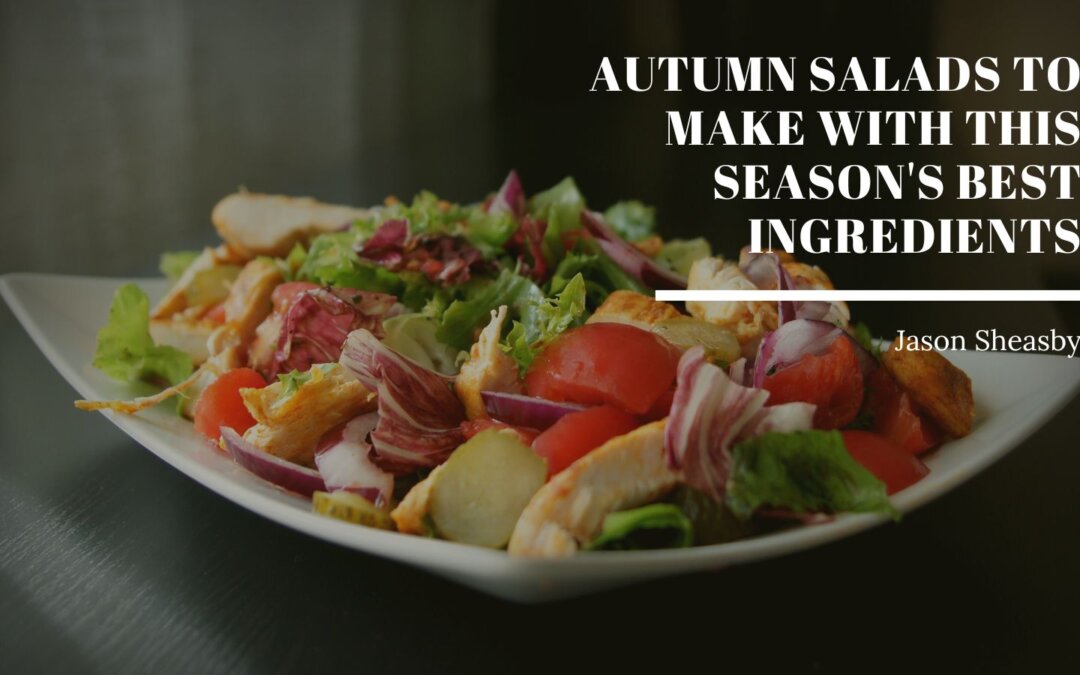As the vibrant foliage heralds the arrival of Autumn, a change not just in the scenery but also in our palate is distinctly felt. The crisp air invites the warmth of hearty meals, yet there’s a unique charm in exploring the fresh, earthy flavors this season brings. With abundant fresh produce, from sweet apples and pears to earthy root vegetables and hearty greens, Autumn provides a playground of flavors and textures for salad enthusiasts. The transition from summer to autumn salads is marked by a richer flavor profile featuring ingredients at their peak during the fall. It’s the time to explore a symphony of colors, textures, and tastes that celebrate the season’s essence. Creating salads with Autumn’s bounty is a delightful endeavor that satisfies our taste buds and resonates with the season’s aesthetics.
Historically, salads have been synonymous with fresh, uncooked vegetables and fruits, often seen as a summer staple. However, as culinary boundaries expanded, the perception of salads has evolved remarkably. They are no longer confined to the warm months but have found a significant place in autumn and winter menus. The tradition of autumn salads can be traced back to various cultures that celebrated the harvest season with fresh, hearty salads incorporating seasonal produce. With a focus on sustainability and local produce, modern culinary practices have further embraced the concept of seasonal salads. The versatility of autumn ingredients allows for many combinations, making salads a creative outlet for professional chefs and home cooks. Autumn salads encapsulate the season’s essence by bringing together a diverse array of flavorful ingredients and essential nutrients. They offer a bridge between the light, refreshing salads of summer and the comforting, warm dishes of winter, embodying the transitional nature of fall.
One of the hallmarks of autumn salads is the incorporation of roasted vegetables. The caramelization of vegetables like butternut squash, sweet potatoes, and beets, through roasting, unveils a depth of flavor that pairs beautifully with the crispness of fresh greens. The juxtaposition of warm, roasted vegetables and excellent, crisp salad greens is a delightful contrast that embodies the warmth and freshness of Autumn. Additionally, roasting vegetables enhances their natural sweetness, providing a beautiful balance to the earthy, bitter flavors of greens like arugula and kale. Incorporating roasted vegetables elevates the taste and nutritional value of the salad, as roasting helps retain nutrients compared to boiling. The variety of textures – from the soft, tender flesh of roasted vegetables to the crunch of fresh greens – adds a dimension of interest, making autumn salads visually appealing and satisfying to the palate.
The inclusion of fruits is another distinctive feature of autumn salads. Apples, pears, and grapes bring a sweet, crisp contrast to the savory and earthy elements commonly found in autumn salads. Their natural sweetness complements the richness of other autumnal ingredients, creating a harmonious blend of flavors. Moreover, fruits add a pop of color, making the salad visually enticing. Incorporating fruits enhances the taste and boosts the salad’s nutritional profile, providing essential vitamins and antioxidants. The diverse range of textures and flavors, from the crunchiness of apples to the soft, juicy flesh of pears and grapes, enhances the overall eating experience. Pairing fruits with nuts like walnuts or pecans and sharp cheese like blue or goat cheese creates a complex, satisfying, and sophisticated flavor profile.
Autumn salads also provide a canvas to showcase nuts and seeds, which add texture and complexity to the flavor profile. Ingredients like walnuts, pecans, and pumpkin seeds are delicious and nutritionally dense, offering healthy fats, protein, and essential minerals. Their rich, nutty flavor complements the earthy tones of autumn salads perfectly. Moreover, nuts and seeds can be candied or spiced for an extra layer of flavor. Including hearty grains like quinoa or farro makes autumn salads more substantial. These grains add a chewy texture and are a good source of protein and fiber, making the salad a well-rounded, nutritious meal. The amalgamation of these elements creates a satisfying salad that celebrates the richness and diversity of Autumn’s produce.
Embracing the seasonal shift by indulging in autumn salads is a delightful way to celebrate this season’s bounty. The myriad of ingredients allows one to experiment and discover new flavor combinations. The versatility of autumn salads lies in their ability to be hearty enough to stand as a meal on their own while retaining a sense of freshness and lightness. They encapsulate the unique essence of Autumn, offering a harmonious blend of flavors, textures, and colors. As we bid farewell to the light, refreshing summer salads, welcoming the hearty, nutritious, and visually appealing salads of Autumn becomes a culinary journey worth embarking on.

